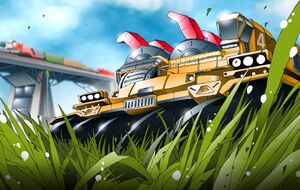Baton Rouge
Baton Rouge was founded as an agricultural community by a small group of Creole homesteaders in TN 1072. Today, despite being home to more than 800,000 people, it has not lost its sedate, agricultural way of life. Unlike most city-states, Baton Rouge lacks a definable core or downtown. It is best described as a conglomeration of many small homesteading villages with scattered industries and municipal buildings. Each of the town’s twenty main boulevards is over fifty kilometers long. Even in the heart of the city, one’s closest neighbor might live a few hundred meters away.
This giant village is the primary agricultural city in the UMF, producing everything from grain to vegetables to dairy products. Numerous factories process and package the local produce for sale across the Arctic. A small part of Baton Rouge’s farmland is dedicated to growing medicinal plants, making this city the main pharmaceutical producer in the Federation.
Baton Rouge is most famous for its artwork. The city has traditionally been a haven for folk artists, especially metal smiths. In an era where factories produce metal goods cheaply and efficiently, old fashioned metal smithing has become an art form. Everything from horseshoes to ancient and traditional Japanese katanas is produced by the artists of Baton Rouge, but the most famous pieces are the elegant gold and copper sculptures from the suburb of Orion.

